The Clash of the Gods
Art Through the Ages
The Dark Ages: Age of Light
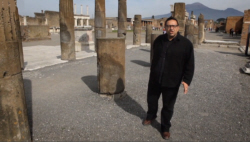
Waldemar in Pompeii
These are the famous ruins of Pompeii. As I’m sure you know, Mount Vesuvius erupted here in 79 A.D., and all of this was covered in ashes and preserved
for posterity in perfect conditions. Now, one of the things they found here, which really surprised them, was proof that there were already Christians here
by 79 A.D.
The thing they found that proved it, is called a Rotas square and these Rotas squares are deeply mysterious.
They have been found all over the Roman Empire, in Syria, in Gaul, even in England, in Cirencester, they found one of these. They are usually inscribed
on the walls of houses, and sometimes on the columns outside the house, but, of course, when they found them, they didn’t have a clue what these were.
Just mysterious word games, plastered outside houses.
What it is is a letter square, made up of five Latin words Rotas, Opera, Tenet, Arepo and Sator. Rotas at the top is Sator backwards. And you can see
Rotas down this side, as well. And Sator down that side. And here in the middle, Arepo, is Opera, “work”, backwards.
The actual words mean something like “As ye sow, so shall ye reap”. But only if you ignore Latin grammar. The various code-breakers twisted it
this way and that for decades, but it still didn’t mean much.
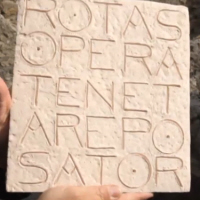
Rotas Square
But then, a eureka moment. One of these code-breakers realised that the important thing about the Rotas square was not the words, but the
letters. Because these letters of the Rotas square can be rearranged to form a cross, which reads the same both ways, up and down. It says
paternoster, which is Latin for “Our Father”, the opening words of the Lord’s prayer.
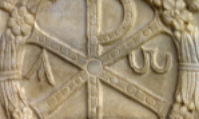
Alpha and Omega
What’s more, these two letters that are left over, Alpha and Omega, are the first and last letters of the Greek alphabet. Alpha and Omega in
their Roman form. You can see them down in the Roman catacombs popping up everywhere. Alpha and Omega the beginning and the end. Popular Christian
code for the one true God.
So these mysterious word squares were put outside houses to signify that the occupants were Christians, and also as a kind of lucky charm to
ward off evil.
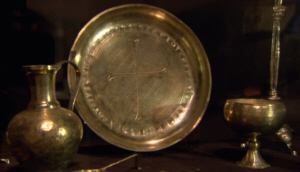
Artistic Direction
Of course, this isn’t art yet, this is an inscription, but it has artistic implications. What you see in here, this appetite for signs and symbols
and secret meanings, that Christian appetite is something that transferred to Christian art. The Christian art of the Dark Ages is an art of mystery
and magic. Of suggestions and miracles. Transcendence and light. The Rotas Square isn’t art yet, but it is an excellent pointer to a new
artistic direction.
One of the reasons early Christian art is so exciting is because you find it in exciting places. Rome is wild enough on the surface, but when you
descend into its underground look how scary and fascinating it becomes.
People often imagine the catacombs were hiding places, underground shelters in which persecuted Christians hid from the Romans.
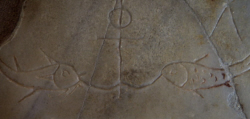
Ubiquitous Fish Symbol
But you can’t hide an underground city as huge as this under anyone’s nose. The Romans knew these were here, all right. What they didn’t know,
is what one Christian was saying to another down here. Because the first Christian art was filled with secret signs and hidden meanings. That’s
why the fish became a ubiquitous Christian symbol.
When two Christians met on the road it is said that one of them would draw this shape in the sand. The other one would draw this shape and
two of them knew immediately that they were Christians together.
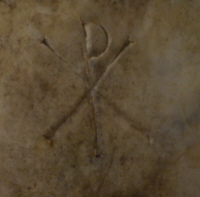
Christogram
This famous Christian sign, the Christogram, or Chi-Rho, represents Jesus himself. It is made by combining two Greek letters, Chi and Rho, the
first two letters of the word Christos, which means “the anointed one”.
It is said that the sign had magic powers. Even today, we still call Christmas, “Xmas”, because of this. Another popular Christian sign was the
anchor. For the simple reason that the top of it here looked like a cross.
Everywhere you look in these haunting Roman catacombs, the first Christians are declaring their faith in such mysterious and cryptic ways. These
symbols and signs weren’t just a secret language, they were also a different way of seeing things, a different way of understanding, not just with
your eyes, but with your imagination.
What is most interesting about this first Christian art you find down here is how few pictures there are in it. No images of Jesus, no Marys,
no saints. For the first few centuries of Christianity there were no Christian images.





